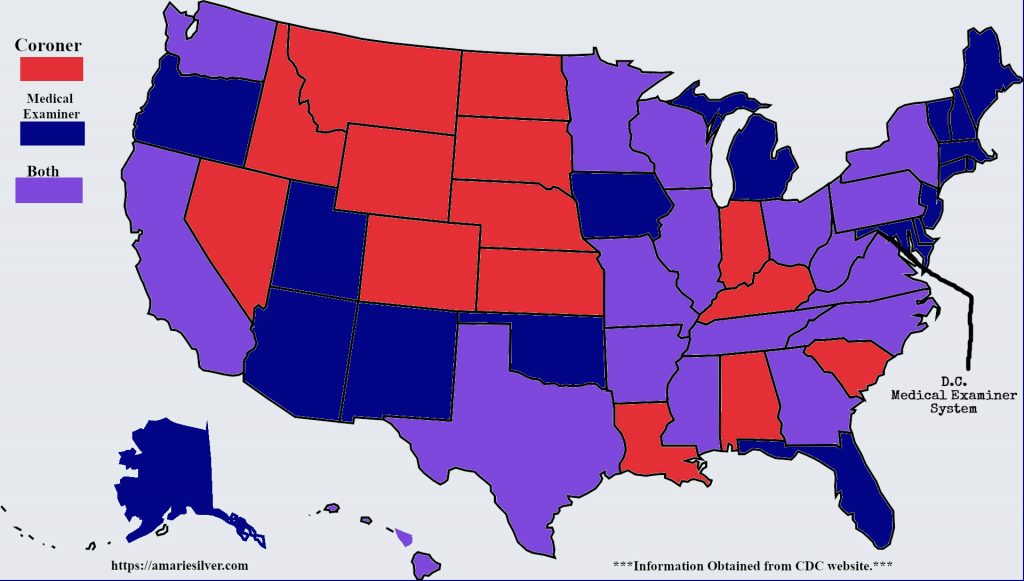One of the biggest gripes I had while I was in graduate school – working on my forensic science degree – was the ridiculous number of PowerPoint presentations we had to give for each class. I mean, really? Why is this necessary? How was knowing how to put together a PowerPoint presentation going to help any of us once we graduated?
Interviewer: What practical experience do you have?
Me:
Interviewer: Can you cast a footprint?
Me: No.
Interviewer: What can you do?
Me: Well, sir, my instructors believed the only practical, hands-on experience I’d needed was knowing how to assemble a PowerPoint presentation. Ooh! And I don’t know if this counts but I watch Law & Order SVU and can totally recite the Miranda Rights by memory.
Interviewer: Well. This has been entertaining. Thank you for coming by. We’ll let you know.
Me: Don’t I get a tour?
Interviewer: Sorry. We only do that for candidates we’re actually interested in.
One class in particular, Physical Aspects of Forensic Science, was taught by the students in the class. The instructor spent the first few lectures going over the do’s and don’ts of PowerPoint presentations. And that was it. That was the only lecturing he did the entire semester. After that, the students did all of the lecturing. We were each assigned topics such as tool mark impressions, shoe prints and tire marks, fingerprint evidence, and ballistics – to name a few. The concern most of the students – myself included – had was that the instructor never told anyone if the people presenting were providing accurate information. So basically, students in the class could have said that Kermit the Frog was the founder of Forensic Science and the first successful fingerprint was lifted at a Burger King back in the early 1600s and the rest of us would’ve been sitting there like:
Alas, that was my life as a graduate student in a forensic science program, I spent my days learning how to make PowerPoint presentations, wondering why it was necessary. (***We did learn how to dust for fingerprints, cast footprints and other hands-on techniques in later classes. ICYMI***)
Fast forward two years after graduation:
 The rest of this blog post touches on information covered in the presentations we gave to local area hospitals – starting with the difference between a medical examiner and a coroner. If you know someone who is a crime writer, feel free to share this blog post with them.
The rest of this blog post touches on information covered in the presentations we gave to local area hospitals – starting with the difference between a medical examiner and a coroner. If you know someone who is a crime writer, feel free to share this blog post with them.
Under a medical examiner system, medical examiners are appointed. They can be fired. They are also required to be board certified forensic pathologists.
Coroners are elected officials. If you want to fire them, you have to impeach them first. They can be board certified pathologists but in some states they aren’t required to be physicians at all. They can be funeral home directors or retired sheriffs. Or they can be the 19 year-old cashier working at the gas station down the street. Because, depending on how the laws are written for that state or county, some places only require that the coroner be 18 years of age, have a valid driver’s license and the ability to pass a background check.
 As far as what states use what system (Coroner v. Medical Examiner) I obtained this information from the CDC’s website. If you double-click on the image, it will take you to that page. I recommend before using any of this information in a story or novel, you check out the CDC’s website.
As far as what states use what system (Coroner v. Medical Examiner) I obtained this information from the CDC’s website. If you double-click on the image, it will take you to that page. I recommend before using any of this information in a story or novel, you check out the CDC’s website.
In addition to discussing the difference between a medical examiner and a coroner, we also covered:
- Cause of Death
- Manner of Death
- What cases the medical examiner’s office would take jurisdiction of.
- What cases received autopsies (because not every case requires a full autopsy.)
- Things we’d appreciate hospitals not tell the family members. (Except this was worded in a politically correct way so we didn’t piss off anyone attending the presentation.)
I’ll probably touch on each of these items in future posts but if there is something you’re dying to know now, send me an email at contactme@amariesilver.com and I’ll do my very best to answer your questions.
Thanks for shopping Snark, Sass, & Sarcasm! I’ll see you next time.
Share this:
- Click to share on Facebook (Opens in new window)
- Click to share on Twitter (Opens in new window)
- Click to share on Pinterest (Opens in new window)
- More
- Click to share on Reddit (Opens in new window)
- Click to share on Telegram (Opens in new window)
- Click to print (Opens in new window)
- Click to share on Pocket (Opens in new window)
- Click to share on LinkedIn (Opens in new window)
- Click to share on WhatsApp (Opens in new window)
- Click to share on Tumblr (Opens in new window)








One Response